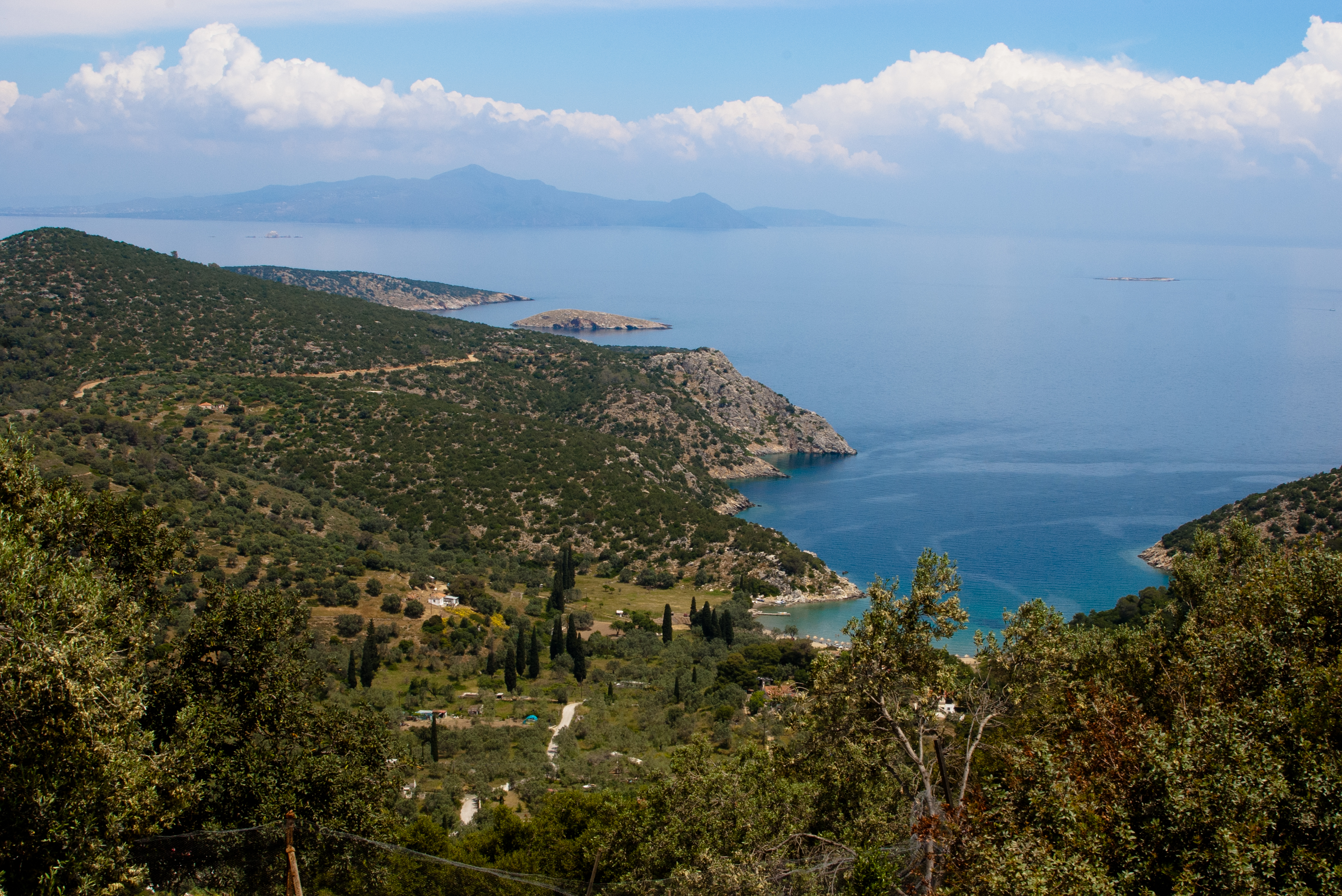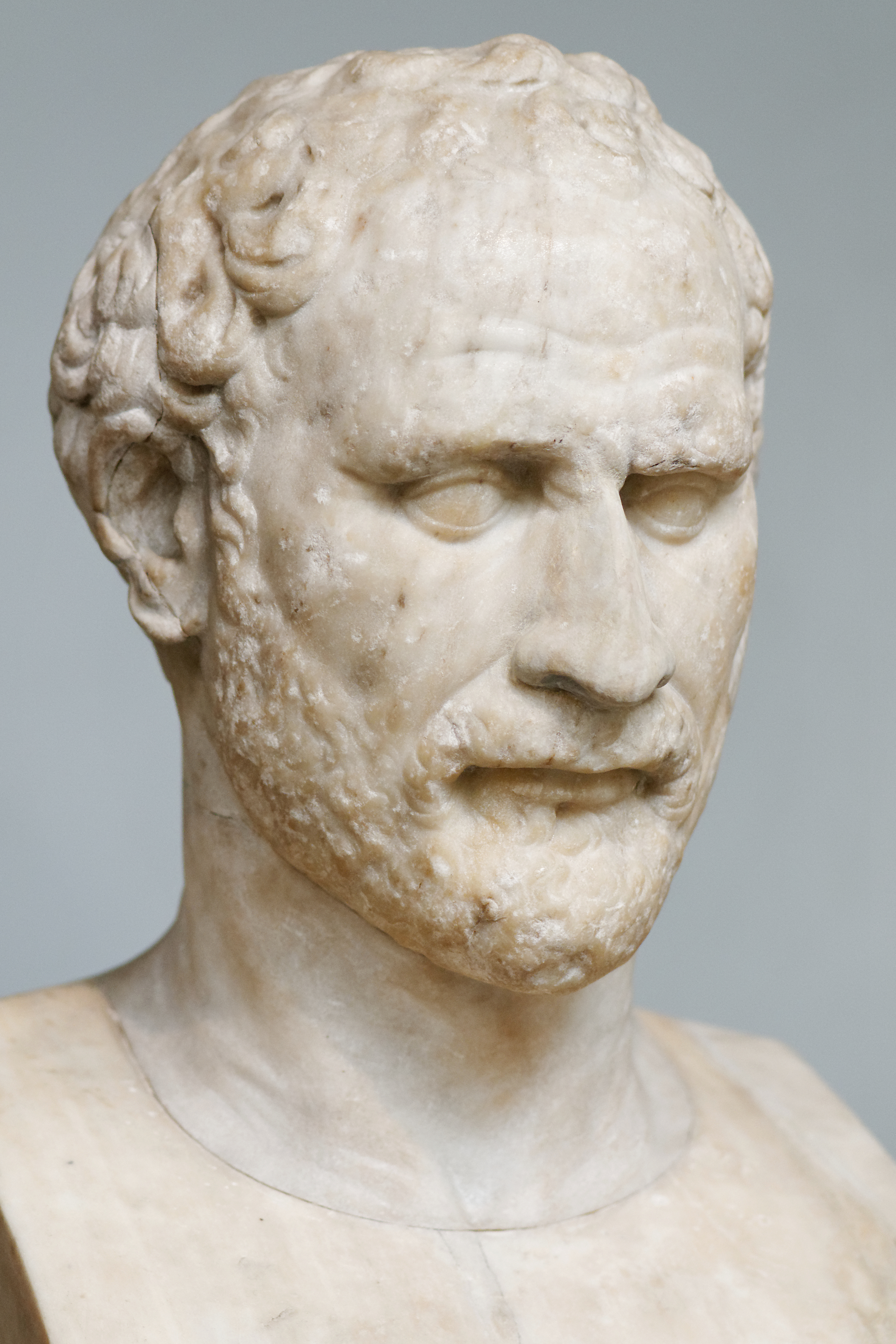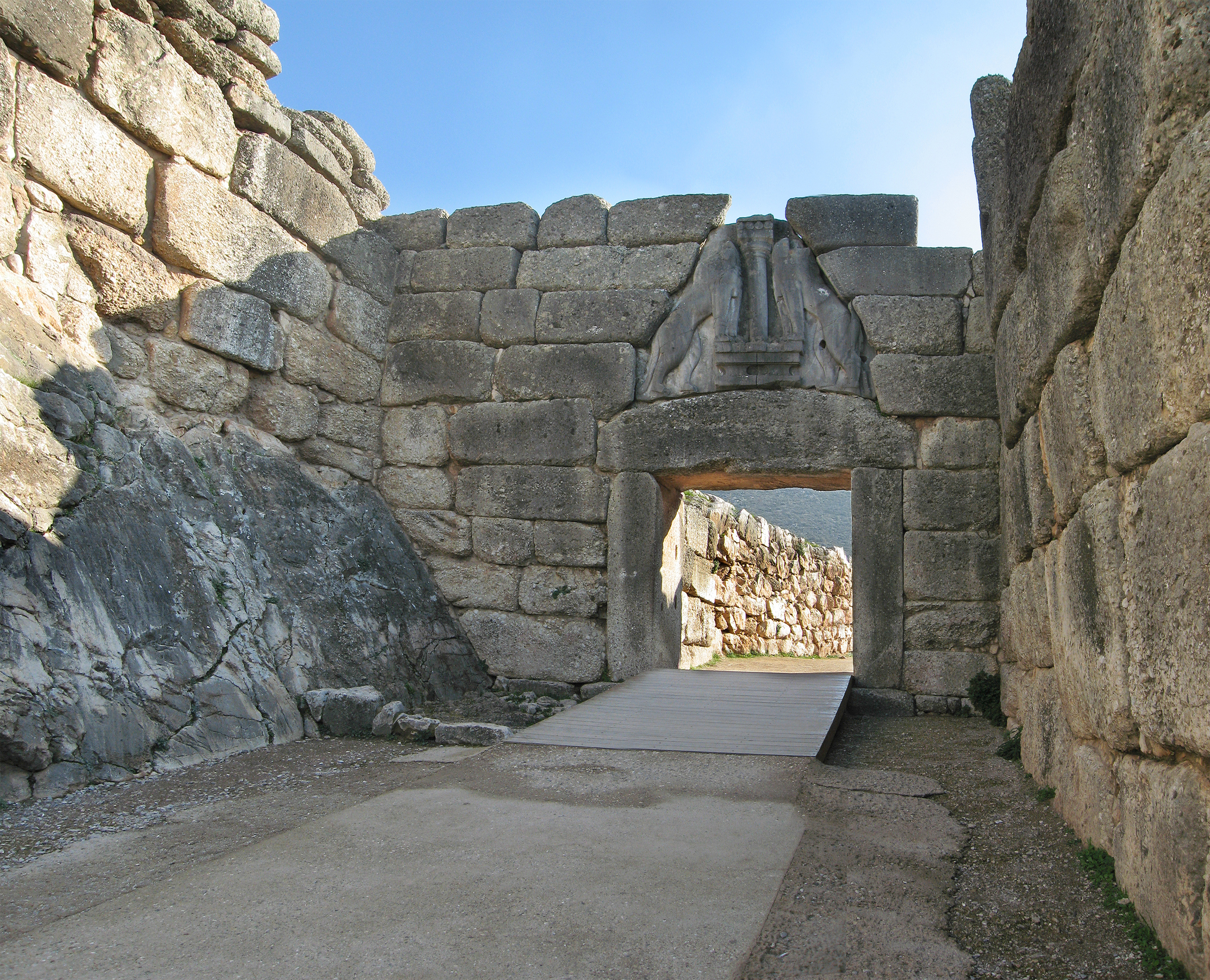|
Kalaureia
Kalaureia () or Calauria or Kalavria () is an island close to the coast of Troezen in the Peloponnesus of mainland Greece, part of the modern island-pair Poros. Strabo describes the coastwise journey along the Ermioni, Hermionic Gulf: :The gulf begins at the town of Asine (Argolis), Asine. Then come Ermioni, Hermione and Troezen; and, as one sails along the coast, one comes also to the island of Calauria, which has a circuit of one hundred and thirty stadia and is separated from the mainland by a strait four stadion (unit), stadia wide. Pre-classical asylum On Calauria a Doric order, Doric temple of Poseidon was built in the ancient sanctuary, possibly around 520 BCE. The dimensions of the temple are 27.4 by 14.4 m. There are six columns on each short side and twelve on each long side. There is strong evidence that the epithet of Poseidon at Kalaureia was ''Geraistos'' (Γεραιστός), a word from an unknown Pre-Greek, pre-Hellenic language. A 6th century A.D. dictionary by ... [...More Info...] [...Related Items...] OR: [Wikipedia] [Google] [Baidu] |
Poseidon
Poseidon (; ) is one of the twelve Olympians in ancient Greek religion and mythology, presiding over the sea, storms, earthquakes and horses.Burkert 1985pp. 136–139 He was the protector of seafarers and the guardian of many Hellenic cities and colonies. In pre-Olympian Bronze Age Greece, Poseidon was venerated as a chief deity at Pylos and Thebes, with the cult title "earth shaker"; in the myths of isolated Arcadia, he is related to Demeter and Persephone and was venerated as a horse, and as a god of the waters.Seneca quaest. Nat. VI 6 :Nilsson Vol I p.450 Poseidon maintained both associations among most Greeks: he was regarded as the tamer or father of horses, who, with a strike of his trident, created springs (the terms for horses and springs are related in the Greek language).Nilsson Vol I p.450 His Roman equivalent is Neptune. Homer and Hesiod suggest that Poseidon became lord of the sea when, following the overthrow of his father Cronus, the world was divided ... [...More Info...] [...Related Items...] OR: [Wikipedia] [Google] [Baidu] |
Poros
Poros (; ) is a small Greek island-pair in the southern part of the Saronic Gulf, about south of the port of Piraeus and separated from the Peloponnese by a wide sea channel, with the town of Galatas on the mainland across the strait. Its surface area is about and it has 3,261 inhabitants (2021). The ancient name of Poros was Pogon. Like other ports in the Saronic, it is a popular weekend destination for Athenian travellers. Poros consists of two islands: Sphaeria (, ), the southern part, which is of volcanic origin, where today's city is located, and Kalaureia (, ), also Kalavria or Calauria (meaning 'gentle breeze'), the northern and largest part. A bridge connects the two islands over a narrow strait. Poros is an island with rich vegetation. Much of the northern and far eastern/western sides of the island are bushy, whereas large areas of old pine forest are found in the south and center of the island. It has a good road network and adequate tourist infrastructure, whic ... [...More Info...] [...Related Items...] OR: [Wikipedia] [Google] [Baidu] |
Demosthenes
Demosthenes (; ; ; 384 – 12 October 322 BC) was a Greek statesman and orator in ancient Athens. His orations constitute a significant expression of contemporary Athenian intellectual prowess and provide insight into the politics and culture of ancient Greece during the 4th century BC. Demosthenes learned rhetoric by studying the speeches of previous great orators. He delivered his first judicial speeches at the age of 20, in which he successfully argued that he should gain from his guardians what was left of his inheritance. For a time, Demosthenes made his living as a professional speechwriter ( logographer) and a lawyer, writing speeches for use in private legal suits. Demosthenes grew interested in politics during his time as a logographer, and in 354 BC he gave his first public political speeches. He went on to devote his most productive years to opposing Macedon's expansion. He idealized his city and strove throughout his life to restore Athens' suprema ... [...More Info...] [...Related Items...] OR: [Wikipedia] [Google] [Baidu] |
Delphi
Delphi (; ), in legend previously called Pytho (Πυθώ), was an ancient sacred precinct and the seat of Pythia, the major oracle who was consulted about important decisions throughout the ancient Classical antiquity, classical world. The Ancient Greece, ancient Greeks considered the centre of the world to be in Delphi, marked by the stone monument known as the Omphalos of Delphi (navel). According to the Suda, Delphi took its name from the Delphyne, the she-serpent (''Drakaina (mythology), drakaina'') who lived there and was killed by the god Apollo (in other accounts the serpent was the male serpent (''drakon'') Python (mythology), Python). The sacred precinct occupies a delineated region on the south-western slope of Mount Parnassus. It is now an extensive archaeological site, and since 1938 a part of Mount Parnassus, Parnassos National Park. The precinct is recognized by UNESCO as a World Heritage Site in having had a great influence in the ancient world, as evidenced ... [...More Info...] [...Related Items...] OR: [Wikipedia] [Google] [Baidu] |
Temenos
A ''temenos'' ( Greek: ; plural: , ''temenē''). is a piece of land cut off and assigned as an official domain, especially to kings and chiefs, or a piece of land marked off from common uses and dedicated to a god, such as a sanctuary, holy grove, or holy precinct. A ''temenos'' enclosed a sacred space called a ''hieron''. It was usually surrounded by a wall, ditch, or line of stones. All things inside of the demarcated area belonged to the designated god. Greeks could find asylum within a sanctuary and be under the protection of the deity and could not be moved against their will. Etymology The word derives from the Greek verb (''temnō''), "I cut". The earliest attested form of the word is the Mycenaean Greek , ''te-me-no'', written in Linear B syllabic script. The Latin language equivalent was '' fanum''. In religious discourse in English, ''temenos'' has also come to refer to a territory, plane, receptacle or field of deity or divinity. Examples * The race-course of t ... [...More Info...] [...Related Items...] OR: [Wikipedia] [Google] [Baidu] |
Mycenaean Greece
Mycenaean Greece (or the Mycenaean civilization) was the last phase of the Bronze Age in ancient Greece, spanning the period from approximately 1750 to 1050 BC.. It represents the first advanced and distinctively Greek civilization in mainland Greece with its palatial states, urban organization, works of art, and writing system.. The Mycenaeans were mainland Greek peoples who were likely stimulated by their contact with insular Minoan Crete and other Mediterranean cultures to develop a more sophisticated sociopolitical culture of their own. The most prominent site was Mycenae, after which the culture of this era is named. Other centers of power that emerged included Pylos, Tiryns, and Midea in the Peloponnese, Orchomenos, Thebes, and Athens in Central Greece, and Iolcos in Thessaly. Mycenaean settlements also appeared in Epirus, Macedonia, on islands in the Aegean Sea, on the south-west coast of Asia Minor, and on Cyprus, while Mycenaean-influenced settlements appear ... [...More Info...] [...Related Items...] OR: [Wikipedia] [Google] [Baidu] |
Pheidon
Pheidon () was an Argive ruler, usually dated to the first half of the 7th century BCE (perhaps reigning ). While his dating is a matter of dispute and much of the information about him is fragmentary, he is almost always described as a powerful and expansionist ruler. He consolidated Argive control over the surrounding region of the Argolid. If the 7th-century dating is correct, then he defeated Sparta at the Battle of Hysiae in 669/8. He is also remembered for forcibly taking control of the presidency over the Olympic games (usually dated to 668 BCE) and creating or standardizing weights and measures which were then used throughout the Peloponnese and called Pheidonian after him. He may have intervened in the affairs of other Greek city-states on other occasions, and one late author claims that he died while involved in civil conflict in Corinth. He was remembered as a tyrant (Aristotle cites him as an example of a king who became a tyrant), perhaps for his demonstration of powe ... [...More Info...] [...Related Items...] OR: [Wikipedia] [Google] [Baidu] |
Archaic Greece
Archaic Greece was the period in History of Greece, Greek history lasting from to the second Persian invasion of Greece in 480 BC, following the Greek Dark Ages and succeeded by the Classical Greece, Classical period. In the archaic period, the Greeks settled across the Mediterranean Sea and the Black Sea: by the end of the period, they were part of a trade network that spanned the entire Mediterranean. The archaic period began with a massive increase in the Greek population and of significant changes that rendered the Greek world at the end of the 8th century entirely unrecognizable from its beginning. According to Anthony Snodgrass, the archaic period was bounded by two revolutions in the Greek world. It began with a "structural revolution" that "drew the political map of the Greek world" and established the ''Polis, poleis'', the distinctively Greek city-states, and it ended with the intellectual revolution of the Classical period. The archaic period saw developments in Greek ... [...More Info...] [...Related Items...] OR: [Wikipedia] [Google] [Baidu] |
Oskar Seyffert (classical Scholar)
Oskar Seyffert (23 January 1841, in Crossen an der Oder – 1 July 1906, in Bad Homburg vor der Höhe) was a German classical philologist. He specialized in studies of the Roman playwright Plautus. He studied philology at the University of Berlin, where his instructors included August Boeckh, Moriz Haupt, Theodor Mommsen, Karl Müllenhoff and Friedrich Adolf Trendelenburg. In 1864 he obtained his PhD, then briefly served as an apprentice at the gymnasium in Frankfurt an der Oder and at the Grauen Kloster in Berlin. In 1865 he began work as a schoolteacher at the Sophien-Gymnasium in Berlin, where he later attained the titles of senior instructor (1872) and professor (1885). Published works In 1882 he published a lexicon on ancient Greece and Rome, titled "''Lexikon der klassischen Altertumskunde : Kulturgeschichte der Griechen und Römer : Mythologie und Religion, Litteratur, Kunst und Altertümer Staats- und Privatlebens''", that was later edited, revised and published in ... [...More Info...] [...Related Items...] OR: [Wikipedia] [Google] [Baidu] |
Philostephanus
Philostephanus of Cyrene (Philostephanus Cyrenaeus) () was a Hellenistic writer from North Africa, who was a pupil of the poet Callimachus in Alexandria and doubtless worked there during the 3rd century BC. His history of Cyprus, ''De Cypro'', written during the reign of Ptolemy Philopator (222–206 BC), has been lost, but it was known to at least two Christian writers, Clement of Alexandria and Arnobius. It contained a narration of the story of the mythical Pygmalion, of Cyprus, who fashioned a cult image of the Greek goddess Aphrodite that came to life. Ovid depended on the account by Philostephanus for his dramatised and expanded version in ''Metamorphoses'', through which the Pygmalion myth was transmitted to the medieval and modern world. The remarks on Cyprus seem to have come from a larger work, ''On Islands''. Scattered brief quotes of Philostephanus on islands refer also to Sicily, Calauria off the coast of Troezen and Stryme, off the Thracian coast. Pliny's Natur ... [...More Info...] [...Related Items...] OR: [Wikipedia] [Google] [Baidu] |





